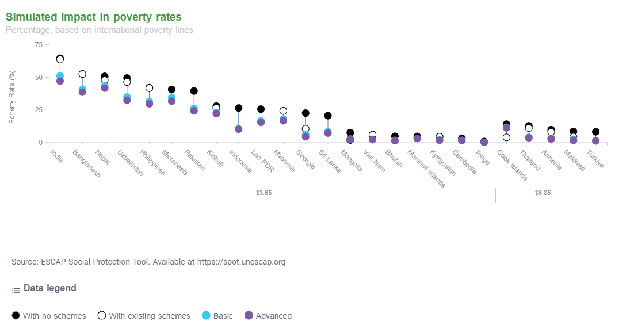[ad_1]

BANGKOK, Thailand, Jan 30 (IPS) – Quadrupling in size since 1950, the working age population in Asia and the Pacific now accounts for 67.2 per cent of the total population in the region and is set to peak at 3.3 billion by the mid-2030s.
Now is the moment for Asia and the Pacific to harness this demographic window by investing in a more resilient working age population.
In Asia and the Pacific, the challenges loom large. Two in three workers are in informal employment. If they fall sick, lose a job, have a disability or become old, they have no employment safeguards or social protection to navigate such disruptions and life contingencies.
Half the regions workforce survives on $5.5 a day, barely enough to lift them out of, or shield them from sliding into, poverty. Unpaid care and domestic workers, are particularly vulnerable as they lack access to income and social protection.
A more resilient workforce is an important step towards eliminating poverty. Effective social protection can mitigate the need of families to resort to measures such as taking a child out of school or selling livestock. Critical ingredients to foster more resilient populations include more comprehensive and inclusive social protection systems and enhanced access to decent employment.
Universal non-contributory social protection schemes can ensure that all persons have access to basic income security to weather disruptions across the lifecycle to enable an adequate standard of living.
Access to universal schemes would also mitigate the risk of the working age population falling into poverty, particularly informal workers, persons with disabilities, women or migrant workers.
ESCAP simulations show that the combined impact of investing in a universal child, disability, maternity and old age benefit can reduce poverty by up to 91.2 per cent at the $3.65 International Poverty Line, and on average decrease inequality by 8.8 per cent for 25 countries in the region, at a cost ranging between 5.1 per cent and 2.6 per cent of GDP.

While non-contributory schemes ensure a basic level of income security, they should be complemented by job-related contributory schemes to provide more comprehensive and higher levels of income security. However, in two thirds of countries, fewer than half the workforce is contributing into a scheme.
Tackling this challenge requires addressing legal barriers and incentive structures, simplifying administrative procedures, strengthening enforcement measures, as well as enhancing awareness and representation of informal workers.
Some positive measures are being implemented, through the expansion of voluntary or mandatory contributory schemes, adjusting eligibility criteria or providing pension credits for caregivers.
By helping to match labour demand and supply, Active Labour Market Policies (ALMPs) can support the working age population to find decent and productive work through public works, training, re-skilling or job-matching. ALMPs will be critical to smoothen the impacts of trends such as the green transition, population ageing and digitalisation, which will demand new skills whilst phasing out some existing ones.
A majority of studies on vocational and on-the-job training programmes identify increased employability and earnings for trainees throughout the region. In Viet Nam, for example, women who received job-training had a 12 percentage point higher wage than untrained women and men.
However, most countries spend on average only 0.2 per cent of GDP a year on ALMPs. There is a pressing need to invest in public employment programmes along with improving the quantity and quality of training schemes, and enhance collaboration with the private sector, whilst working towards formalising jobs and advancing the decent work agenda.
The impacts of the recent COVID-19 pandemic demonstrated the fragility of hard-won development gains. Against the steady decline of extreme poverty over the past decades, in 2023, due to the fallout from the COVID-19 pandemic and cost of living crisis, 47 million people are expected to have fallen into extreme poverty.
Escalating frequency and intensity of climate change-related shocks will add further pressure on populations. Work-related contributory schemes such as unemployment insurance can act as an automatic stabiliser to build the first layer of resistance against these shocks.
However, unemployment benefits are available to a less than a quarter of the total workforce in the region. Well designed ALMPs can help people access employment opportunities, enhance productivity and increase earnings. When well-coordinated with social protection systems, such as in the case of Turkiye, they can help groups in vulnerable situations access training opportunities needed to re-engage in the labour market.
Other work-related social protection can also support mitigation measures, for example through directing public works programmes towards mangrove restoration or afforestation efforts.
Building the resilience of the working age population will be paramount to maintain and progress sustainable development in Asia and the Pacific. Through extending multipillar social protection systems across the lifecycle and ALMPs, countries are investing in a key group to build resilience to life contingencies, work transitions and climate change: a workforce that is able to override these disruptions and break through cycles of poverty.
Sayuri Cocco Okada is Social Affairs Officer at ESCAP.
IPS UN Bureau
Follow @IPSNewsUNBureau
Follow IPS News UN Bureau on Instagram
© Inter Press Service (2024) — All Rights ReservedOriginal source: Inter Press Service
[ad_2]
Source link
